While in Vermont we saw an exhibition of famed American folk-artist “Grandma Moses” at the Bennington Museum.
Later, we stopped in at the gallery of her great-grandson, Will Moses. His Mt. Nebo Gallery and studio in Eagle Bridge, N.Y., are located next door to the 200-year-old farmhouse where Grandma Moses worked, so it’s no surprise that Will, a fourth-generation painter, began painting at just four years old.
Truth be told, I liked Will’s work even more than I liked his great-grandmother’s work. His paintings are reminiscent of Grandma Moses work, but perhaps more sophisticated or contain more of a narrative through-line.
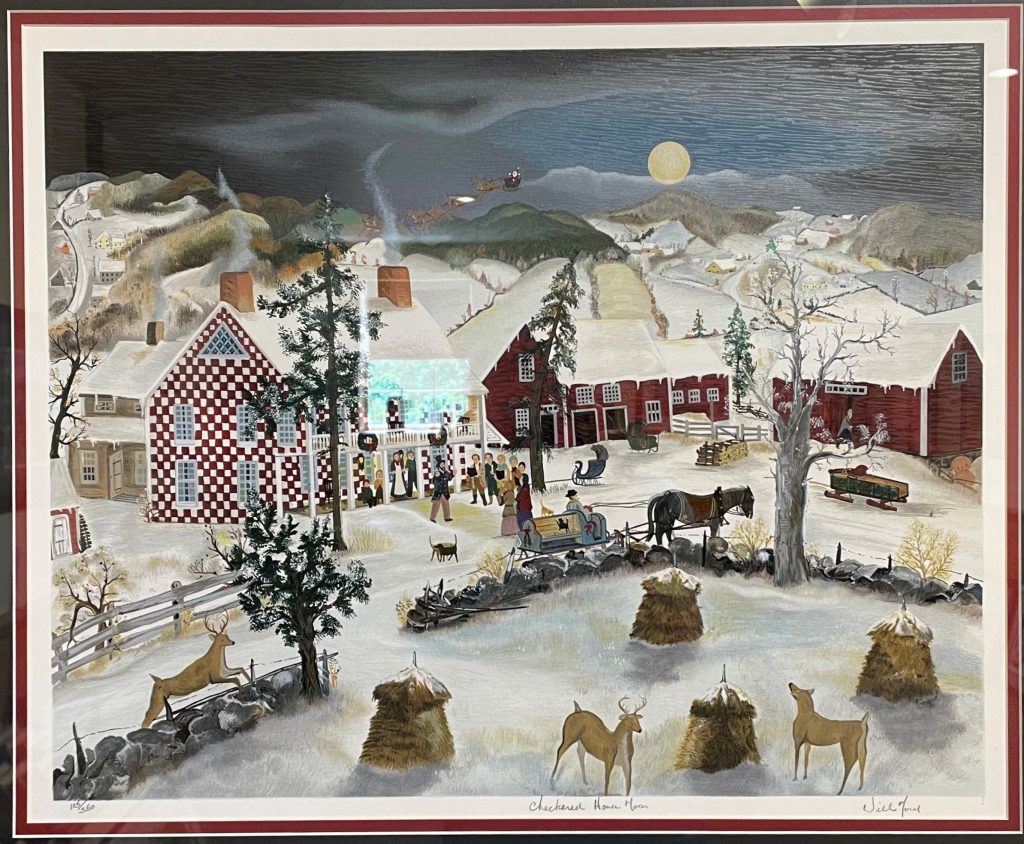
Unfortunately, paintings and prints don’t go in a van, but we did buy a puzzle and some note cards. The cover photo to this post is called Will Moses’ Christmas Eve Service.
We popped into the National Bottle Museum in Ballston Spa, N.Y.
It has more than 3,700 bottles in its collection, and I think it’s more for people who are doing research or otherwise have a bottle fascination – like members of the Federation of Historical Bottle Collectors (who knew it’s a thing?!).
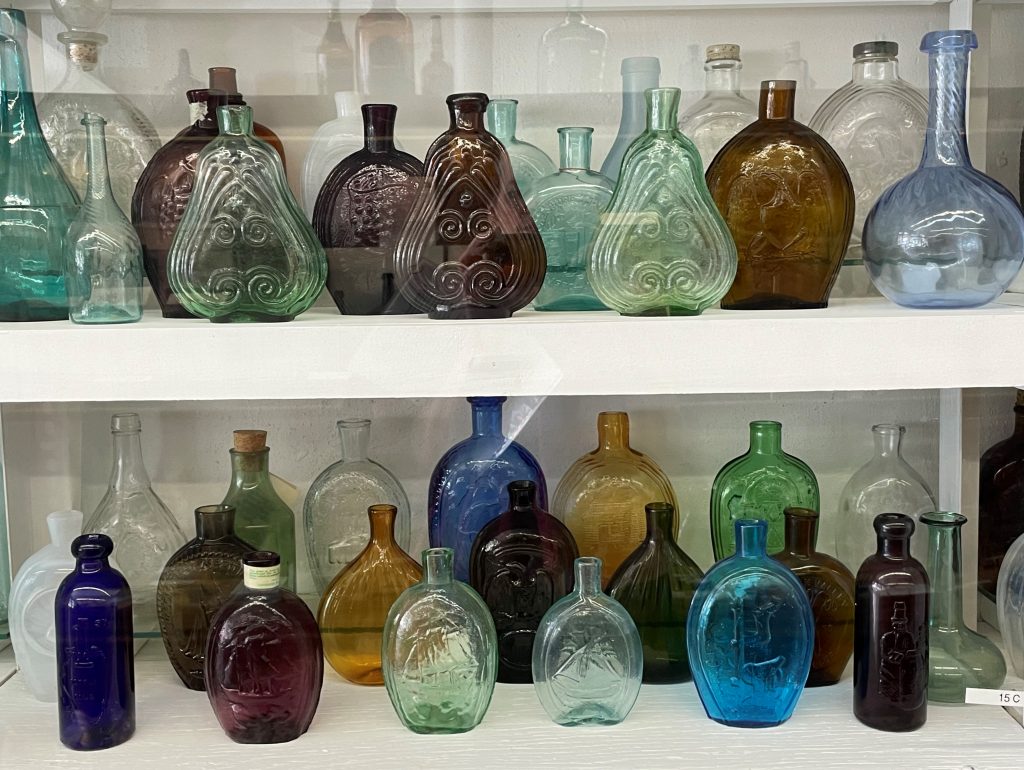
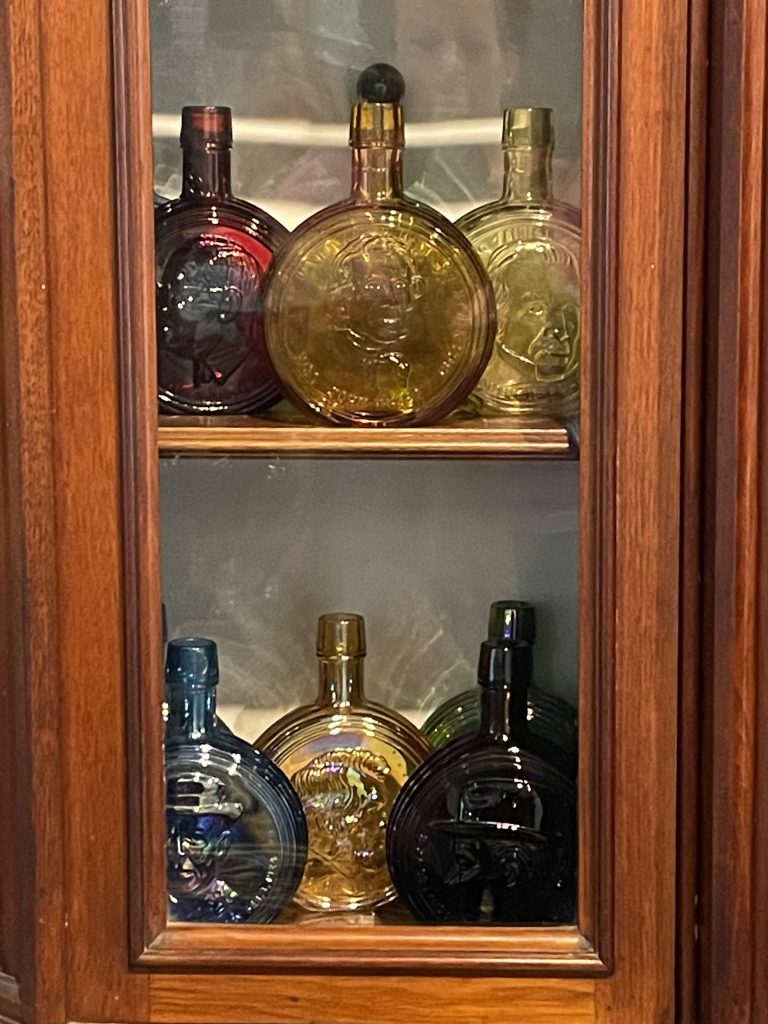
One of the displays at the National Bottle Museum is of a collection of “uranium glass” made from glass that has had a compound containing uranium added to give it a yellow-green color. Uranium glass has been made since the 1830s (with a break around World War II); after 1959, manufacturers switched to depleted uranium from natural uranium.
All sorts of decorative and functional glassware was made using uranium glass, and it is still being made today (though not for dinnerware).
Uranium glass is easily identified as it fluoresces a bright green color under ultraviolet (black) light as you can see in the accompanying video.
They do not emit a significant amount of radiation and are generally considered safe.
Also in Ballston Spa, N.Y., is the birthplace of Major General Abner Doubleday, the (possible) inventor of baseball. Doubleday fired the first shot of defense in the first battle of the Civil War at Fort Sumter, S.C., and later had a pivotal role at the Battle of Gettysburg.
In 1908, as the sport of baseball was in its early days, a commission was created to end once and for all the debate about who “invented” baseball. The commission received testimony that Abner Doubleday coined the term “Base Ball” and codified a set of rules for a game played by schoolboys in Cooperstown, N.Y. Without investigation, the commission accepted the account and published a memo that established Abner Doubleday as the inventor of the game of baseball.
For half a century or longer, this story of the origins of America’s favorite game was accepted as established fact, but later it was completely debunked and baseball was determined to be an adaptation of the English game of rounders.
That hasn’t completely ended the perception of Abner as the “father of baseball.” As we saw when we visited Arlington National Cemetery a couple of years ago, Doubleday’s tombstone there is routinely decorated with baseballs from visitors.
Today, the Doubleday birthplace is a craft brewery, Real McCoy Brewing, so of course Doug had to pay it a visit.
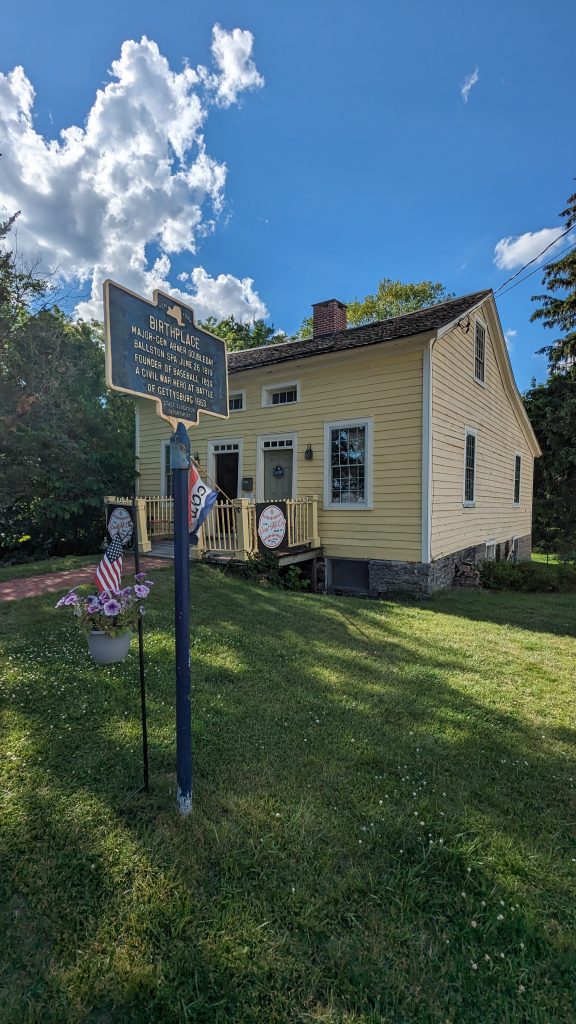
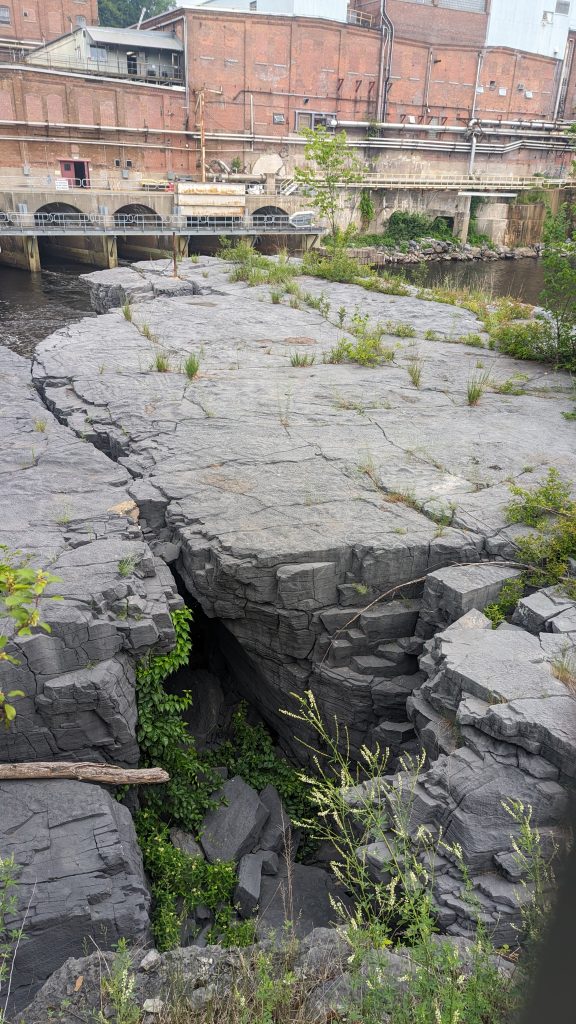
A few blocks from The Hyde Collection in Glen Falls, N.Y. is a site of interest to only the most literary-minded.
In 1824, while wrapping up a trip to the Adirondacks, author James Fenimore Cooper paid a visit to a rocky island in the Hudson River. With waterfalls flowing above and around them, Cooper was struck by “these dark and silent caves,” and one of his companions suggested that the location would be a great scene for a novel.
Cooper was thus inspired, and put his imagination to work. The Last of the Mohicans was the result of his labors, published in 1826 and quickly established as a classic of American literature. Even if you haven’t read the book, perhaps you have seen the movie where Daniel Day-Lewis leads a group of native Americans as they flee from the British, taking cover in the “dark and silent caves” behind a waterfall.
Today, a dam just upstream severely constricts the water flow, so the caves no longer have water flowing over them. In addition, rocks around the cave have collapsed. As a result, the caves are not nearly as majestic as they might have been 200 years ago.
Nonetheless, the City of Glen Falls and South Glen Falls Village have taken it upon themselves to mark the site of “Cooper’s Cave” with a viewing platform and a number of historical plaques that discuss the history of the area, Cooper’s visit, and the legacy of The Last of the Mohicans.
It’s been a while since we’ve done any hiking and we are supposed to be training, so why not do 4.5 miles and almost 1,000 feet of elevation in super humidity?
We started at that lake in the background at Moreau Lake State Park, hiked up to the viewpoint, saw two snakes on the way, then hiked back down.
It was pretty hazy at the top so the view wasn’t especially great, either.
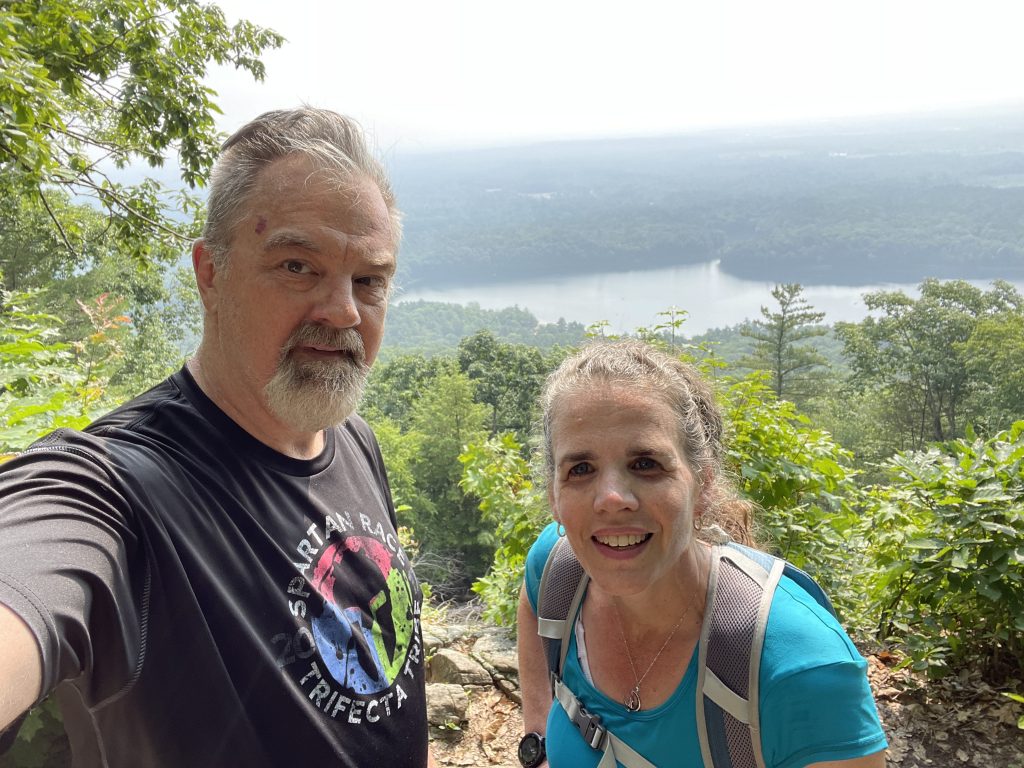
On the plus side, I think we both sweated out about a gallon of water weight, so that was a nice bonus. The showers after were divine.





One thought on “A Few Sites along the Mid-New York State Hudson River”